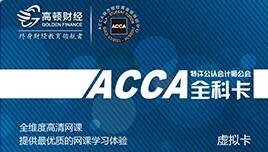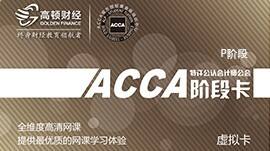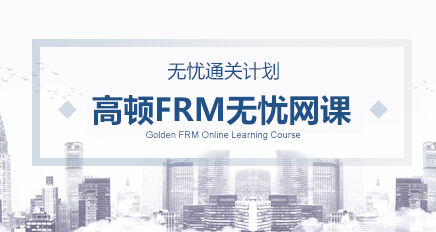2010年12月ACCA考试考官报告(P4)
General Comments
The structure of the paper was similar to past papers with two compulsory questions in section A,consisting of 60 marks in total,and three 20-mark questions in section B,of which candidates had to do two,for the remaining 40 marks.
The overall performance of the candidates was satisfactory.
In section A,question one consisted of 35 marks and question two consisted of 25 marks.Four professional marks were allocated to question one.Both questions required candidates to undertake computations and discussion.In section B,question five was wholly discursive,while questions three and four consisted of a mixture of computational and discursive elements.
Excellent answers were obtained from candidates who applied their knowledge to the scenario given in the question.The presentation of such answers was good,with clear labelling and structure and workings.In question one especially,a clear structure and effective use of appendices enabled such answers to gain the maximum professional marks.In section B,perhaps more than other questions,question four required a well structured and systematic approach as well.Most successful candidates attempted all the parts of the questions and managed their time well between questions.
There was more evidence in this sitting compared to previous sittings of some candidates not employing good time management techniques and not answering all the parts of a question,or in a minority of cases not answering a question at all.A number of such candidates failed marginally even though the questions they had answered fully were of a pass standard.It is important to make a reasonable attempt at each question.
Candidates need to bear in mind that it is easier to obtain marks at the start of a question rather than towards the end of a question.It is imperative that candidates learn to manage their time effectively through practicing past exam questions under timed and examination style conditions.
Some candidates were poorly prepared for the exam in terms of their knowledge.This was especially evident in questions one and three,and in the discursive parts of questions two and four.Candidates need to be aware that for P4 it is expected that they develop their knowledge and the ability to apply that knowledachieve a pass mark due to lack of knowledge and not being able to apply thge.In a number of cases candidates failed to at knowledge to the scenario in the question.
The P4 paper has a large syllabus and numerous technical areas.Candidates need to know the syllabus well in order to apply it to the question scenario.Poor performance was also evident where candidates did not read the content and requirements of questions fully.Answers need to be directed at the scenario in the question,general answers did not gain many marks.
Specific Comments
Question One
This question required candidates to assess three proposals for a company facing financial difficulties and discussing the impact of the proposals on the main stakeholders,Part (i) asked candidates to estimate the return the debt holders and the shareholders would receive if the company ceased trading and closed down,Part (ii) asked candidates to estimate the income position and the value of the company in the event of a financial restructure,Part (iii) asked candidates to estimate the additional finance required and the value of the company in the event of a management buy-out,Part (iv) asked the candidates to discuss the impact of each of these proposals on the company’s main stakeholder groups,Corporate restructuring and reorganisation from which the key elements of this question were drawn is a key area of the syllabus.
Parts (i) and (iv) were generally done well,with many candidates achieving high marks for both parts,In the discussion part (iv) a number of marks were available for discussion of the impact on the stakeholders where it was not necessary to have access to the answers from parts (ii) and (iii),and many answers handled this part well,In part (i),most candidates looked at the funds available to the debt holders after redundancy payments,However,a surprising number of candidates ranked the debt holders and shareholders at the same level for any residual repayments,which is not correct.
Parts (ii) and (iii) were done less well,In part (ii) many candidates did assess the income position but could not then translate that into cash flows and determine an estimate of the value,In part (iii) there was confusion about how to calculate the additional finance needed and the value of the company,and many answers could not determine the likely size of the reduced operation,A sizable minority of candidates did not attempt parts (ii) or (iii) or both at all.
Question Three
This question was a popular question but performance varied between good and quite poor.
In part (a) this question required candidates to calculate the number of put options needed to hedge an underlying position,by calculating the hedge ratio using N(-d1).Part (a) also asked candidates to explain the numerical answer.Part (a) was either done well with candidates calculating the delta and then applying it correctly;or it was done poorly where candidates went onto calculating the value of a call and a put option for the given variables,and these were not required.Very few candidates explained the numerical answer.Candidates need to be aware that some question parts may have more than a single requirement and all the requirements need to be addressed correctly in order to achieve full marks.
Part (b) asked candidates to discuss the position held by each manager with respect to risk and the implications of this.Some reasonable points were made but in many cases these lacked depth or substance.An article appeared in the Student Accountant recently,which looked at why risk should or should not be managed.
Question Four
In part (a) this question asked candidates to calculate the dividend capacity of a company which received dividends from its international subsidiaries.A proposal was put forward which would change the level of dividends received due to a change in the tax payable (in fact the dividends reduced because more profits were being made by the subsidiary in a high tax country and the higher taxes resulted in lower dividends).Part (b) asked for a comment on the result and the actions the company would need to take if the dividend capacity was not sufficient to pay the desired amount of dividends.
This question was the least popular of the optional,section (b) questions.It required a logical and systematic approach because a lot was being asked from the candidates especially in answering part (a) of the question.
Good attempts at part (a) achieved high marks but sometimes the answers were not appropriately structured and this resulted in mixed-up or jumbled answers.Few appropriate answers were received for part (b) and mostly these reflected the disorganised approach to part (a).
Question Five
This question was the most popular and probably the best answered of all the questions on the paper with many candidates gaining a high proportion of the marks for their answers.It asked candidates to consider whether or not a joint venture was the viable option,how the drawbacks of a joint venture could be mitigated and additional information required.
Answers that gained fewer marks did not give many points or lacked adequate discussion because they were in note form.Sometimes points were repeated in various formats and these did not get additional marks.Overall though,many answers gained over half marks and some cases over 70% of the total marks for this question.

相关阅读
2012年12月ACCA考试P4考试考官报告2013/06/19
2012年12月ACCA考试P3考试考官报告2013/06/19
2012年12月ACCA考试P2考试考官报告2013/06/19

















